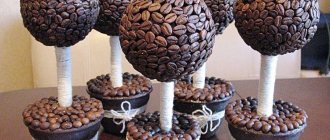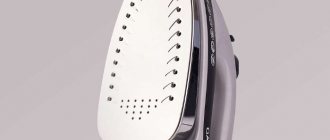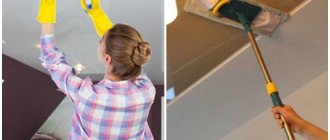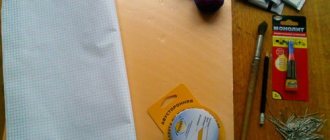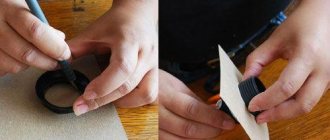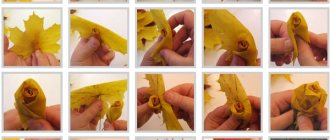Cleaning the glass
To make cleaning the shower stall easier, a vinegar solution is suitable - a glass of acid to two glasses of hot water.
The composition must be poured into a sprayer and applied to the walls of the cabin. After 20 minutes, the surface must be wiped with a cloth. The same solution is used to clean windows and mirrors. An interesting way to clean a shower stall is with a car window cleaner. It allows you to instantly get rid of excess moisture on the walls.
Paper towel for moisture in refrigerator
Foggy bottles and moisture released from fresh vegetables during storage cause condensation to accumulate in the refrigerator. As a result, puddles, smudges and stains from dried liquid form.
Paper towel is an excellent absorbent. Roll up a large piece in several layers and place it under bottles or vegetables and it will get rid of condensation. At the same time, vegetables will be stored longer, because excessive moisture leads to their rapid rotting.
Cleaning the microwave
To disinfect your microwave, soften grease and freshen your kitchen, you will need citrus peels (lemon, orange or grapefruit). You need to put them in a bowl half filled with water, then turn on the microwave for 5 minutes and leave it closed for half an hour. Essential oils will help get rid of unpleasant odors and soften dirt. All that remains is to wipe the device with a dry sponge.
Additional useful kitchen tips for housewives
It is worth listing other most useful tips for the home:
- You can add shine to copper utensils by rubbing the surface with regular ketchup and adding a little salt to it;
- A paper towel under the fruits and vegetables in the refrigerator will help get rid of condensation, and greasy stains in the kitchen will be easier to remove if you dust them with flour. Activated carbon is also ideal for the refrigerator - a couple of tablets will help eliminate unpleasant odors;
- Cleaning a microwave at home will become an easy task if you rub the steel surfaces of the microwave with a couple of drops of vodka or alcohol - this will not only disinfect, but also provide an excellent shine to the surfaces. And the internal surfaces of the microwave can be ideally washed with a solution of water and lemon juice;
- To remove excess fat from the finished dish, you need to wrap pieces of ice in a paper towel and rub them over the surface of the dish. Ice will attract fat and it will remain on the towel;
- To avoid crying when chopping onions, first place them in the freezer for half an hour (this method will not work if the onions will be used in salads);
- If you are wondering how to remove the smell from the refrigerator at home, mix water and vinegar in equal proportions and wipe the surfaces of the refrigerator. You can also use a mixture of lemon juice and water in a 1:2 ratio;
- To make your own dish detergent, mix a teaspoon of mustard powder with a couple of liters of hot water - mustard will remove grease well. Cutting boards can be wiped down with lemon juice to remove unpleasant odors, and kitchen sponges can be disinfected by briefly soaking them in a bowl of salted water.
- To prevent wooden furniture from drying out, it is useful to periodically wipe it with olive oil. And by wiping leather furniture or parquet with a cotton cloth and a couple of drops of oil, you can give them freshness and shine.
These and many other helpful tips around the house will make your life much easier and help make it more environmentally friendly. Using life's tricks in solving kitchen issues, you will quickly get the result in the form of perfect cleanliness, from perfectly washed pots to a clean microwave and refrigerator, even with regular use.
We don’t spread dirt around the house
Door mats often do not cope with their task and do not retain dirt. To ensure that snow and sand brought from the street remain in the hallway, it is recommended to use a tray filled with small stones that can be found on the street, in the forest, or brought from the dacha. Those who have a lot of shoes can purchase a bookcase with several shelves - it will not allow dirt to get on the floor.
Maintaining order
Once the perfect order has been established, you need to communicate the new rules to your family. From now on, all things should be in their places: if someone took a thermometer, it should be returned to the first aid kit, etc. For a month you will need to follow your family and constantly remind them of this “law,” but gradually everyone will get used to it.
To keep your home clean, you need to accustom your household to a number of innovations related to quick cleaning:
- Kitchen. The main rule here is daily cleaning. Don't be alarmed, you do this all the time. After each meal, you need to wash all the dishes and wipe all surfaces, the only addition: attention should be paid to the stove. Fresh dirt can be easily removed with a sponge in a minute, but if you start this business, you will need more time and chemicals to clean it.
- Bathroom. If you teach your household to wipe down tiles and faucets after taking a shower, you will significantly save your energy on subsequent bathroom cleanings. To do this, just hang a duty cloth on the heated towel rail and remind your loved ones of the new responsibilities. If you splash it, wipe it off.
- Wash. The main reason for the cluttered appearance of rooms is scattered things that need to be washed. To avoid this, place a basket in the bathroom or hallway in which household members will put their clothes. This will make it easier for you to estimate the amount of laundry that needs to be washed and sort it into “white”, “black” and “colored”. If you iron rarely and save dried items somewhere, you can also have a separate basket for them.
- Children's room. If there are toys in the house, they should all be in boxes, and their owners should be accustomed to putting them away for storage before going to bed. Schoolchildren should have organized places where textbooks and notebooks will be neatly stored.
- Garbage. Admit it, sometimes you yourself are too lazy to take the wrapper from candy eaten in the room to the trash can in the kitchen, what can you expect from your household members. One day I looked into the child’s desk drawer and was stunned; it was half filled with candy wrappers. Everything is due to laziness, but it should not be an obstacle to maintaining cleanliness. Buy trash baskets and place them in each room, so your loved ones can throw away unnecessary things and not spoil your order.
Separately, you should consider the hallway: due to the specific layout of the apartments, it becomes the source of dirt. If the path from the rooms to the kitchen passes through the area where you take off your shoes, this problem needs to be solved. If you have a vestibule, you can agree with your neighbors that you will place a small rack there for storing outdoor shoes. By taking off your shoes outside the apartment, you will leave sand and dirt behind. If this option cannot be implemented, consider a different arrangement of furniture in the hallway so that shoes are not removed in a “passage” place.
In general, by implementing these “life hacks” you can significantly save your energy and stop cleaning 24 hours a day. Now you can clean less often, and the process itself will not take up a lot of your time, which can now be devoted to family and communication with loved ones. The main places that will need attention every day are the floors in the kitchen and hallway. It is enough to walk through them with a broom or vacuum cleaner, and the entire house will be protected from the spread of dirt.
Continuing the topic, I suggest watching an interesting video that clearly embodies the principles that help maintain constant order:
Taking care of your washing machine
To prevent damage to your main home assistant, you need to periodically clean it with soda. It will help get rid of unpleasant odors, limescale and mold without harming the mechanism. Soda can be used to clean filters, tray, and drum. You will need one pack of product: most of it is poured into the powder container, the smaller part into the drum. You need to turn on the machine, selecting the highest temperature and the shortest washing time.
Lifehack 13: To prevent excessive foam formation
Imagine the situation: you put the broth on the stove to cook, and you go off to do laundry, clean, or talk on the phone. When you return to the kitchen, you find that the liquid has boiled, and the foam has already stained the entire stove and pan. Sound familiar?
To avoid having to sit and “watch” when the broth is ready, simply place a wooden spoon on top of the pan. It will prevent foam from accumulating.
Keeping the refrigerator tidy
A neat refrigerator is always nice, but, unfortunately, it gets dirty very quickly. To clean your shelves less often, you can put parchment paper on them, which is easy to remove: stuck crumbs, spills and stains will remain on it. Special silicone mats are also suitable: once removed from the refrigerator, they can be easily washed in the sink.
Cleaning the kitchen - sterile cleanliness
How to make your kitchen sterile? To avoid dust and dirt on tables and equipment. To keep the dishes sparkling clean. Only general cleaning will help. Of course, general cleaning of the kitchen should be done periodically, but there is no need to do it often.
How to quickly clean the kitchen? If you keep the room clean all the time, this issue will not arise. For example:
- wipe the stove and microwave after each cooking;
- wipe the table after breakfast and dinner;
- try to wash dishes immediately after eating.
If you clean the kitchen correctly, then, in case of unexpected guests, you won’t have to blush because the room is dirty. And being in a clean and cozy kitchen is much more pleasant.
Cleaning the pan
You should not throw away a burnt pan, even if it seems hopelessly damaged. You can clean the inside of stainless steel cookware using shavings of laundry soap diluted in two glasses of water. It is necessary to boil the solution for 10 minutes.
To get rid of dirt on the outer walls, you need to pour vinegar essence and water (1:1) into a container larger than the size of the pan. The solution must be brought to a boil and a pan placed in it so that the steam reaches the walls. After 10 minutes of treatment, the surface should be wiped with a sponge and soda.
Labor optimization
Professionals also approach the cleaning process wisely. Cleaning the room occurs in a certain order, which saves both effort and time.
1. Start cleaning from the farthest corner of the room and gradually move from it clockwise (or counterclockwise - it’s up to you) towards the exit.
2. Always adhere to the following rule: first remove the top of the room (cobwebs, cornices, ceiling), then the middle (walls, furniture), and only after that can you move on to the floor.
3. Start the cleaning process by getting rid of unnecessary things: everything unnecessary from the room should move to the trash can.
- The next step is to put all your things in their places. After this, your room will immediately be transformed and you will see that the cleaning is almost finished.
- Next, vacuum the carpets and remove them from the room.
- After this, all that remains is to wipe off the dust (in the sequence described in the previous paragraph) and wash the floor.
4. Even at the interior planning stage, you can make cleaning easier for yourself. For this:
- Choose things, dishes, etc. from materials that stain less and are easier to clean. Glossy and glass surfaces, black objects, chrome plated dishes, etc. will cause you the most trouble. Traces remain on them from every touch, and as a result the item looks unkempt.
- Arrange the furniture in the room in such a way that there are no hard-to-reach places where dust will constantly accumulate, and that you can easily reach any point in the room.
- And don’t forget: the fewer things there are in a room, the easier it is to clean it. Take a close look at your apartment. Perhaps you have accumulated a lot of items that have not brought you joy for a long time. Cleaning is a good reason to get rid of them.
5. Want to know how you can clean in two places at the same time? Let's share a secret. Many household chemicals do not act immediately. They need to be applied to a dirty surface and left there for a while so that they break down grease or eat away limescale. While they are “working”, you can go to another room and continue cleaning there. After returning, all you have to do is remove the dirt and rinse the cleaned area with clean water.
Removing rust from the bathtub
Due to the poor quality of tap water, plaque often forms on plumbing fixtures. In addition to using industrial compounds, improvised means can also help. Choose any method:
- Dilute 1 liter of 9% vinegar in a bath with warm water and leave for 12 hours.
- Mix 3 packets of citric acid with fine salt and spread over the rust. Sprinkle with warm water and leave for 2 hours.
- Leave a towel soaked in Coca-Cola on the contaminated areas for several hours. Phosphoric acid will dissolve plaque.
How to make a cutting board perfect - useful tips for all occasions
A popular problem in every kitchen is stains on plastic cutting boards. To eliminate them, you can use two methods: hydrogen peroxide or regular baking soda. Armed with peroxide, simply spray it onto the surface of the board to make it damp. Leave the board to sit for several hours and then rinse it with detergent - the stains will disappear without a trace. An ordinary lemon is perfect for cleaning a cutting board; if you cut it and thoroughly wipe the surface of the board with half, the lemon will remove all unpleasant odors.
Another option is to mix 3 tablespoons of baking soda, a spoon of detergent and a spoon of peroxide. The resulting paste is also applied to the board, left for several hours and then washed. A natural abrasive in the form of soda will easily remove even deep stains.
IMPORTANT! Never use bleach to remove stains - it is toxic to humans if inhaled or ingested, and can also corrode the surface of plastic.
Cleaning clogged pipes
To get rid of mold, unpleasant odors and pathogenic bacteria, you need to pour boiling water into the pipe and add half a glass of soda. After 5 minutes, you need to pour a glass of vinegar and the same amount of boiling water. Cover the pipe with a rag. After 10 minutes, pour hot water into the hole again.
You must wear gloves when working with vinegar!
Cleaning Features
The kitchen is not only the favorite room of the household, but also the place where food is prepared. Specific contaminants on the surface of furniture and appliances are not always removed in a timely manner and become a serious problem. The task is complicated by various materials and the proximity of food products, which are not recommended to come into contact with aggressive components of cleaning products and detergents.
Appliances
The most problematic places in the kitchen are household appliances that are involved in cooking and storing food. In addition to standard dust and dirt, here the housewife is faced with greasy stains, traces of spilled liquids and carbon deposits. Some simple tips will help you cope with this problem:
Oven
The contents must be removed from it. Soak racks, baking sheets, molds in a detergent solution.
Treat the internal and external surfaces with a special agent to combat carbon deposits and fat deposits, let the active components work, remove the residue with a clean damp cloth and wipe dry.
You can find out how to remove carbon deposits in the oven here.
Plate
If its surface is covered with enamel, it is necessary to apply detergent and leave for 20 minutes so that the grease and carbon deposits soften.
Then treat with a sponge, pay special attention to problem areas around the burners, rinse thoroughly with a clean cloth and dry.
It is not recommended to use products with abrasive particles or hard scourers to avoid scratches.
Steel coating is more resistant to mechanical stress , but stains may remain on it. The processing algorithm for it will be the same, but you should avoid circular movements during cleaning, wipe dry and polish at the end of the process with a cotton cloth. For glass ceramics, only special sponges, scrapers and industrial products are used.
You can find out how to clean the grate of a gas stove from carbon deposits here.
Hood
The surfaces of the device can be easily washed with soapy water. The main problem – deposits on a grease filter made of aluminum or steel – may not be dealt with by the product if it has not been washed for several months.
It should be removed and soaked in soap and soda (15 ml of detergent and 50 g of soda), vinegar or ammonia (100 ml per 3.5 liters of water) solution, left for 20-30 minutes, brushed, rinsed with clean water and dried. After all manipulations, the filter is returned to its original place .
Fridge
The first step is to remove the content and revise it. Before cleaning, the appliance must be defrosted; it is better to do this in advance, otherwise the process of general cleaning of the kitchen will be delayed.
The next stage is shelves and containers. All parts must be removed, washed under warm water with a sponge or brush using detergent and dried. Proceed to cleaning the back wall of the device (condenser), here it is advisable to use a vacuum cleaner or a narrow brush with a long handle.
You can wash the internal surfaces with a gentle product that will not damage the structure of the plastic.
Moving from top to bottom, do not miss corners and recesses. Clean the drain hole and rubber seal, wipe everything with a dry cloth and leave the doors open until completely dry. Don’t forget about the outer surface; a weak soap solution will quickly remove all dirt from it.
Before cleaning household appliances, they must be disconnected from the power supply. Read how to clean your refrigerator here.
Furniture and countertop
Cleaning and disinfecting kitchen floor and wall cabinets, tables and chairs is an important stage of general cleaning. Step-by-step instructions for housewives:
Cleaning the interior surfaces of cabinets.
Empty shelves and drawers must be wiped with a microfiber cloth, preferably using a disinfectant spray. The contents are sorted, the excess is sent to the trash and arranged and put into place.- Treatment of external facades. You will need a soap solution and a sponge. If the furniture is made of wood, it is better to use special household chemicals for this material so as not to damage the structure.
- Washing accessories. Furniture handles absorb most of the dirt; they should be thoroughly treated with a detergent solution. If the parts are removable, it is better to remove them, clean them and return them to their original place. Metal and wood components must be polished using a special spray.
- Cleaning the countertop. The choice of product for these purposes depends on the material from which the table surface is made. For laminated chipboard and MDF, a solution of dishwashing liquid is suitable; for glass, an alcohol-based spray is suitable. To clean a wooden surface, use a minimal amount of liquid, dry thoroughly and polish with a beeswax-based product.
Chairs and stools are wiped last; special attention should be paid to furniture legs.
Floors
The final stage of kitchen cleaning is washing the floor . For these purposes, it is better to choose household chemicals that cope with various types of contaminants and have antibacterial properties. A product that contains chlorine is fundamentally unsuitable for kitchen floors.
Some housewives use folk recipes. For example, a soap-soda solution with the addition of a few drops of essential oil, water-alcohol in a ratio of 5:1 or vinegar (15 ml per 5 liters of water).
Once the equipment and detergent have been selected, the following steps must be completed:
- clear the floor of carpets and unnecessary objects (chairs, floor pots);
- sweep and collect small debris, crumbs and food debris;
- treat corners, baseboards, hard-to-reach places with a cloth soaked in detergent;
- wash the entire surface, moving from the window to the exit.
The floor must be treated twice. The second time, the rag must be wrung out well to prevent excess moisture from forming. When working with aggressive and volatile components, it is necessary to use personal protective equipment (gloves, respirators, aprons) and ensure air circulation in the room.
How to clean plumbing fixtures until they shine?
The basis of hygiene in the kitchen is a perfectly clean sink. Step-by-step instructions for cleaning it:
Remove dirty dishes and cutlery.- Clean the containers and soap dishes that are placed on it.
- Rinse the walls and bottom of the product with running water to remove any remaining food.
- Apply an industrial or homemade solution to the entire surface.
- Treat with a sponge until completely clean, rinse off any remaining detergent with water.
- Wipe the sink with a dry cloth to avoid streaks.
The sink cleaner should be selected based on the material from which it is made and the manufacturer’s recommendations. The product drain is capable of accumulating fatty deposits and particles of food debris, so it often becomes a source of unpleasant odor and has an unaesthetic appearance.
An industrial cleaner or baking soda with vinegar (15 g per 50 ml) will help remove obsessive odors and dirt. The liquid must be poured into the hole, left for half an hour, then filled with hot water.
Before using an industrial product, you must study the instructions on the label and make sure it is compatible with the material from which the sink and components are made.
Don't forget about the mixer. The chrome product must be cleaned of limescale, rinsed and polished. To prevent deposits from forming, it is necessary to wipe the sink and its parts with a dry cloth after each use.
This article will tell you how to eliminate smell from your kitchen sink.
Other kitchen objects
The window in the kitchen is a source of light and its amount directly depends on the cleanliness of the glass. Wash windows in any room in the same sequence , starting from the inside:
- Use a damp cloth to remove any accumulation of dirt and dust from the glass;
- clean the plastic parts of the structure in the same way, carefully wiping the corners and joints;
- if the contamination is significant, you can prepare a weak soap solution;
- treat the structure with a clean damp cloth and wipe dry;
- Using a spray bottle, apply ammonia-based product to the glass;
- Use a dry lint-free cloth to polish the surface so that there are no streaks left.
You can clean the outside of the window in the same sequence. If access to it is difficult, you can use equipment with a telescopic handle.
Lamps in the kitchen are an additional source of light. If it is impossible to remove the lighting fixture, you should use the proven instructions:
- Apply detergent to the chandelier using a spray bottle.
- Wait 10-15 minutes.
- A swab with a small amount of alcohol will help to clean the components and get rid of stains.
- Wipe the product with a dry cloth.
It is not recommended to turn on the device until it is completely dry.
Steel, aluminum or cast iron batteries also require careful care .
It is not enough to wipe the external surfaces; the bulk of the dust is concentrated in hard-to-reach places, that is, inside the structure. A vacuum cleaner with a long narrow nozzle, a brush dipped in soapy water, household cloth gloves, sponges and special brushes will help.
Getting rid of stains in the oven
To remove fat, you need to place a baking sheet with water in a preheated oven and wait until the steam takes effect. But if the stains are old, the help of cleaning products is needed. Mix half a cup of baking soda and 4 tablespoons of water to form a paste. Lubricate contaminated surfaces with it and sprinkle with vinegar. We wait until the reaction occurs and wipe thoroughly with a sponge.
Monthly kitchen cleaning
You need to start this serious kitchen cleaning by turning on your favorite music.
- Place pots, braziers, frying pans and everything that is burnt in a large basin and pour in a well-mixed solution of hot water and 2-3 tablespoons of mustard powder for 2-3 hours. Then wipe with a sponge, rinse with clean water and allow to dry before putting back in place.
- Turn off the refrigerator, place all food on the table, wash containers and shelves in a solution of 1 liter of warm water and 2 tablespoons of baking soda. Wipe the interior cabinet of the refrigerator and rubber seals with a sponge soaked in this solution. It is best to wash the outer surface of the refrigerator with soapy water. Be sure to wipe all washed surfaces of the refrigerator, shelves and containers dry with a soft cloth. Review the contents of the refrigerator, throw away any food that has become unusable, put everything back in its place and turn on the refrigerator. To prevent odors from appearing in the refrigerator, you need to pour baking soda into low glasses, cover them with cling film, poke holes in it with a toothpick and place them on shelves. This feature is valid for at least 3 months.
- Lay out all the contents of the cabinets, review and throw away what is unnecessary. Check closed jars of bulk products and put 1 clove of garlic in them. Wipe the interior surfaces of the cabinets with a weak solution of water and vinegar or citric acid, let them dry and put all the contents in their places. Wipe the outer surface of the cabinets with a soapy solution, then with clean water and wipe with a dry soft cloth.
- Disconnect the stove from the power supply or turn off the gas.
Remove the burners, soak them in soapy water, then wash them with clean water. Wipe off debris from the stove with a paper napkin, pour a warm solution with soda or citric acid in a ratio of 1:5 on the surface and let stand for 20 minutes. Under no circumstances should plastic parts and handles of the stove be washed with household chemicals. It is best to moisten them with warm water and sprinkle with soda or citric acid and also let them stand.
You can also clean the oven using folk remedies. Baking soda, citric acid, vinegar, and baking powder work great for removing dirt and grease. First, you need to moisten the inner surface of the oven and the glass of the door with warm water, then apply soda or citric acid diluted to a paste on them and let stand for 15 minutes. After this, remove the mixture with a paper towel. If the oven is very dirty, mix salt, baking soda and water in a 1:1:1 ratio. Apply this paste on its surface, leave it overnight, and rinse with water in the morning.
These detergents can also be used on the side surfaces of the stove.
Now you can wash the entire stove with warm, clean water. Dirt and grease in hard-to-reach places can be removed with an old toothbrush. Do not use metal or hard sponges to avoid scratching the surface of the slab.
- Ceramic tiles can be easily and quickly washed with a soap solution and alcohol. To give it shine, wipe with a solution of water and vinegar in a ratio of 5:1 or with citric acid.
- Wash countertops, oilcloths and cutting boards with a warm solution of water and vinegar in a 5:1 ratio.
- Fill the sink with dry mustard powder, let stand for 15 minutes and rinse with hot water.
- Wash the floor, ventilate the kitchen well and freshen the air. Place 2 drops of the most pleasant essential oil for you and your family on the battery or light bulb. Orange will lift your spirits, basil will enhance concentration, anise will calm you down and provide optimism.
So the work, maybe not exactly your favorite, but inevitable for you, has been completed. And the proverb says correctly that the devil is not as terrible as he is painted. And how pleasant it is to the soul from good music, ideal purity and freshness!
Removing carbon deposits from the iron
To make your iron shine like new, you can try several folk remedies:
- A cloth soaked in 3 percent hydrogen peroxide.
- Cotton swab with table vinegar and ammonia.
- Baking soda solution.
- Nail polish remover for removing stuck nylon or polyethylene.
The tips listed will help you cope with cleaning faster, using only environmentally friendly and cheap products.
How can you replace dish detergent?
If you have pots lying around with burnt bottoms, try boiling regular Pepsi-Cola in these dishes. It will remove carbon deposits well, and can also be useful for cleaning the drain pipe in the kitchen from grease and dirt - just pour soda into the pipe overnight.
There are other useful life hacks for the home that you can use for washing dishes: for example, a portion of toothpaste will perfectly help deal with blackened silver cutlery, and aluminum foil, crumpled into a ball, will help you quickly and easily wash glass containers of grease.
But dirty mugs and other dishes with deposits can be easily cleaned using citric acid. Pour it inside, lightly rub with a sponge and the surface will become perfectly clean. If you need to deal with fat in a frying pan, arm yourself with salt - pour it into the frying pan for 15 minutes and then rub with a sponge.
Read the article ——>>>> Useful DIY life hacks for your home
Toothbrush for grout between tiles
If the work area in the kitchen is tiled, the seams will have to be periodically cleaned of adhering grease and dirt. It is convenient to do this with a simple toothbrush with the addition of detergent.
You can mix baking soda and vinegar in equal parts, apply the resulting mixture to the seams, leave for 10 minutes, clean and rinse off the residue with a sponge and warm water. You can also simply wet the seams, coat them with soda and rub them well with a brush. The dirt will come off mechanically.


